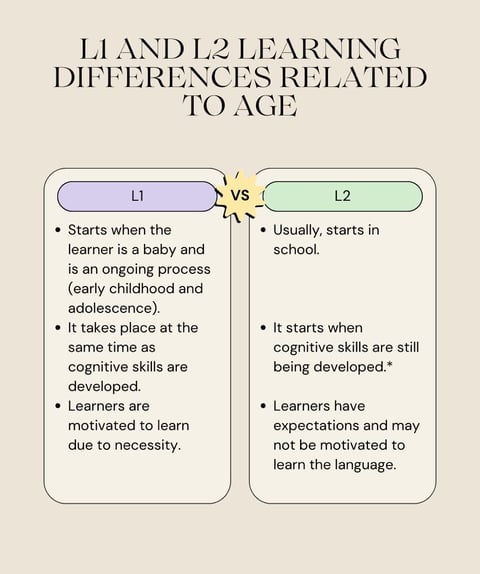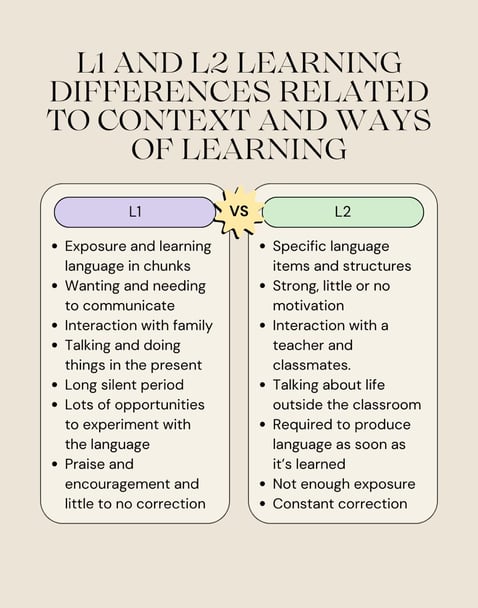
Unit 12: Differences between L1 and L2 learning
Do we learn languages as we did when we were children?
5/19/20252 min read
Why are learning our native language and an L2 two different processes?
Learning a first language (L1) and a second language (L2) involves different circumstances, brain processes, and outcomes. Here are the key differences:
1. Age of Acquisition
L1 is learned in early childhood, typically before the age of 5.
L2 is often learned later in life, after the brain has already developed strong connections to the first language.
2. Natural vs. Formal Learning
L1 is acquired naturally, through immersion in a language-rich environment (home, caregivers, play).
L2 is often learned in classroom settings, with formal instruction, grammar rules, and vocabulary lists.
3. Brain Plasticity
Young children's brains are more neuroplastic, meaning they can easily form new connections and absorb language sounds and structures.
Older learners have less plasticity, and their brains may rely more on translation or comparison with their L1.
4. Emotional and Cognitive Role
L1 is closely tied to identity, emotion, and early development—it shapes how we think and express feelings.
L2 may not have the same emotional depth or automaticity, especially in the early stages.
5. Error Correction and Feedback
L1 learners receive constant, informal feedback (e.g., modeling, repetition) from caregivers and peers.
L2 learners often receive explicit correction and have less exposure to natural feedback unless immersed in an L2-speaking environment.
6. Interference from L1
In L1 acquisition, there’s no interference from another language.
In L2 learning, the learner’s L1 influences pronunciation, grammar, and vocabulary choices, which can cause errors (called language transfer).
7. Ultimate Proficiency
Almost all native speakers achieve complete fluency and grammatical accuracy in their L1.
L2 learners vary greatly in their outcomes, and very few achieve native-like proficiency, especially in pronunciation and idiomatic usage.
Observe the differences:
Click on the button below to practice this unit!
References:
Spratt, M., Pulverness, A., & Williams, M. (n. d.). The TKT Course Modules 1, 2 and 3 (2nd ed.). University of Cambridge ESOL Examinations.




The Aeon Language Zone
Preparación y material de estudio para el examen TKT.
Contacto
info@theaeonlanguagezone.com
© 2024. All rights reserved.
